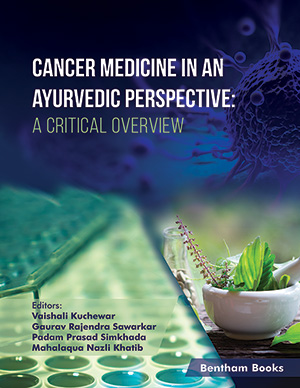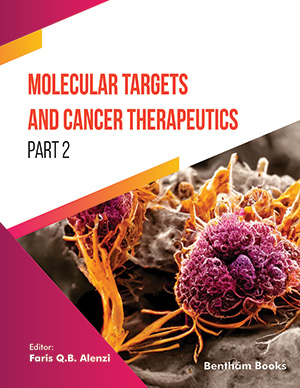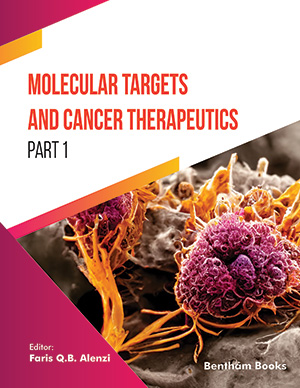Abstract
Background: Despite substantial research, the mechanisms behind stress Tako-tsubo cardiomyopathy (TTC) remain rather elusive.
Objective: The purpose of this paper was to provide a detailed review of the mainstream factors underlying the pathophysiology of TTC, highlighting the novel contributions of molecular pathology and in-vivo molecular imaging.
Methods: A careful literature review selected all papers discussing TTC, specifically those providing novel insights from myocardial pathology and cardiac molecular imaging.
Results: Results concerning myocardial pathology, defect extension, sites and relationships between functional parameters underline the existence of a causal relationship between a determinant (e.g., the release of catecholamines induced by stress) and an outcome for TTC, which is not limited to a reversible contractile cardiomyopathy, but it includes reversible changes in myocardial perfusion and a long-lasting residual deficit in sympathetic function. Besides, they reinforce the hypothesis that sympathetic nerves may exert a complex control on cardiac contractile function, which is likely to be direct or indirect through metabolism and microvascular perfusion changes during anaerobic and aerobic conditions.
Conclusion: TTC is characterized by acute transient left ventricular systolic dysfunction, which can be challenging to distinguish from myocardial infarction at presentation. Catecholamineinduced myocardial injury is the most established theory, but other factors, including myocardial metabolism and perfusion, should be considered of utmost importance. Each effort to clarify the numerous pathways and emerging abnormalities may provide novel approaches to treat the acute episode, avoid recurrences, and prevent major adverse cardiovascular events.
Keywords: Tako-tsubo cardiomyopathy, cardiac molecular imaging, myocardial pathology, physiopathology, ADP, molecular imaging.
[http://dx.doi.org/10.1007/s10571-012-9804-8] [PMID: 22297544]
[http://dx.doi.org/10.1111/j.1751-7133.2011.00210.x] [PMID: 21609386]
[http://dx.doi.org/10.1378/chest.07-0608] [PMID: 17573507]
[http://dx.doi.org/10.1093/eurheartj/ehl032] [PMID: 16720686]
[http://dx.doi.org/10.1056/NEJMoa1406761] [PMID: 26332547]
[http://dx.doi.org/10.1016/j.jacc.2007.03.050] [PMID: 17662398]
[http://dx.doi.org/10.1007/s12350-008-9015-3] [PMID: 19152137]
[http://dx.doi.org/10.1093/cvr/cvab081] [PMID: 33711093]
[http://dx.doi.org/10.1007/s00259-016-3575-2] [PMID: 27909770]
[http://dx.doi.org/10.1007/s12350-018-1312-x] [PMID: 29858766]
[http://dx.doi.org/10.1016/j.jacc.2009.08.057] [PMID: 20117439]
[http://dx.doi.org/10.1002/clc.23109] [PMID: 30393886]
[http://dx.doi.org/10.1161/CIRCULATIONAHA.108.767012] [PMID: 19106400]
[http://dx.doi.org/10.1253/jcj.53.813] [PMID: 2810691]
[http://dx.doi.org/10.2147/VHRM.S40163] [PMID: 23626469]
[http://dx.doi.org/10.1177/003591576505800503] [PMID: 14283879]
[http://dx.doi.org/10.1111/j.1751-7133.2008.00046.x] [PMID: 19187405]
[http://dx.doi.org/10.1016/j.ahj.2012.03.020] [PMID: 22795284]
[http://dx.doi.org/10.1016/j.amjcard.2012.06.041] [PMID: 22819424]
[http://dx.doi.org/10.1111/j.1540-8175.2005.40046.x] [PMID: 16060897]
[http://dx.doi.org/10.2169/internalmedicine.47.0499] [PMID: 18277028]
[http://dx.doi.org/10.1016/j.ijcard.2007.07.002] [PMID: 17651841]
[http://dx.doi.org/10.1152/japplphysiol.00444.2003] [PMID: 14766788]
[http://dx.doi.org/10.1002/(SICI)1096-9861(19971201)388:4<507:AID-CNE1>3.0.CO;2-6] [PMID: 9388012]
[http://dx.doi.org/10.1046/j.1440-1681.1999.02995.x] [PMID: 10065332]
[http://dx.doi.org/10.1016/S0008-6363(01)00473-4] [PMID: 11861030]
[http://dx.doi.org/10.1056/NEJM199906103402306] [PMID: 10362825]
[http://dx.doi.org/10.1253/circj.71.565] [PMID: 17384461]
[http://dx.doi.org/10.1016/j.carrev.2013.09.008] [PMID: 24140050]
[http://dx.doi.org/10.1161/CIRCULATIONAHA.106.677625] [PMID: 18645066]
[http://dx.doi.org/10.1016/j.hfc.2016.06.007] [PMID: 27638020]
[http://dx.doi.org/10.1093/eurjhf/hfp173] [PMID: 20023040]
[http://dx.doi.org/10.1093/eurjhf/hft040] [PMID: 23794609]
[http://dx.doi.org/10.3389/fcvm.2021.703418] [PMID: 34485402]
[http://dx.doi.org/10.3390/ijms22189875] [PMID: 34576040]
[http://dx.doi.org/10.1016/j.ahj.2007.11.008] [PMID: 18294473]
[http://dx.doi.org/10.1016/S0735-1097(01)01316-X] [PMID: 11451258]
[http://dx.doi.org/10.1016/j.amjcard.2008.02.062] [PMID: 18549847]
[http://dx.doi.org/10.1093/eurheartj/ehl570] [PMID: 17395683]
[http://dx.doi.org/10.3389/fcvm.2021.732708] [PMID: 34738019]
[http://dx.doi.org/10.1016/j.ijcard.2012.12.092] [PMID: 23357048]
[http://dx.doi.org/10.1093/eurjhf/hfs161] [PMID: 23099354]
[http://dx.doi.org/10.3389/fcvm.2022.797154] [PMID: 35514439]
[http://dx.doi.org/10.1016/j.jacbts.2018.08.006] [PMID: 30623136]
[http://dx.doi.org/10.1001/jama.2011.992] [PMID: 21771988]
[http://dx.doi.org/10.1016/j.echo.2005.05.017] [PMID: 16376779]
[http://dx.doi.org/10.1093/ehjci/jev145] [PMID: 26072914]
[http://dx.doi.org/10.1016/j.ejheart.2005.03.011] [PMID: 16397924]
[http://dx.doi.org/10.55729/2000-9666.1042] [PMID: 35711405]
[http://dx.doi.org/10.1007/s10741-005-8555-8] [PMID: 16583180]
[http://dx.doi.org/10.25122/jml-2018-0067] [PMID: 32341693]
[http://dx.doi.org/10.1007/s00508-006-0668-0] [PMID: 17009063]
[http://dx.doi.org/10.1016/j.nuclcard.2007.08.005] [PMID: 18242481]
[http://dx.doi.org/10.1016/j.jcmg.2016.01.028] [PMID: 27344416]
[http://dx.doi.org/10.1038/nrcardio.2009.51] [PMID: 19471287]
[http://dx.doi.org/10.1007/BF02976903] [PMID: 18242491]
[http://dx.doi.org/10.1007/s12350-021-02755-y] [PMID: 34427859]
[http://dx.doi.org/10.1007/BF03007363] [PMID: 18984457]
[http://dx.doi.org/10.1016/j.nuclcard.2008.03.010] [PMID: 18761270]
[http://dx.doi.org/10.1016/S0735-1097(02)02924-8] [PMID: 12628716]
[http://dx.doi.org/10.1253/jcj.65.349] [PMID: 11316138]
[http://dx.doi.org/10.1007/BF02985570] [PMID: 16248379]
[http://dx.doi.org/10.1093/eurheartj/ehm401] [PMID: 17921529]
[http://dx.doi.org/10.1016/j.nuclcard.2005.06.087] [PMID: 16344237]
[http://dx.doi.org/10.1007/BF02971249] [PMID: 16580961]
[http://dx.doi.org/10.1080/02841850600928482] [PMID: 17135004]
[PMID: 11438630]
[PMID: 15235057]
[http://dx.doi.org/10.1016/j.cardfail.2008.10.031] [PMID: 19327622]
[http://dx.doi.org/10.1007/s12350-016-0775-x] [PMID: 28054182]
[http://dx.doi.org/10.1007/s00259-008-0922-y] [PMID: 18787823]
[http://dx.doi.org/10.1093/eurheartj/ehq039] [PMID: 20215125]
[http://dx.doi.org/10.1007/s12350-020-02435-3] [PMID: 33400255]
[http://dx.doi.org/10.2169/internalmedicine.41.829] [PMID: 12413004]
[http://dx.doi.org/10.1016/j.ijcard.2009.04.025] [PMID: 19443060]
[http://dx.doi.org/10.1253/circj.CJ-13-1276] [PMID: 24284957]
[http://dx.doi.org/10.1093/eurheartj/ehz068] [PMID: 30831580]
[http://dx.doi.org/10.1093/eurheartj/ehab029] [PMID: 33768230]
[http://dx.doi.org/10.1038/ncpcardio1066] [PMID: 18094670]
[http://dx.doi.org/10.1056/NEJMoa043046] [PMID: 15703419]
[http://dx.doi.org/10.1161/CIRCULATIONAHA.105.558239] [PMID: 16286583]
[http://dx.doi.org/10.1093/bjaceaccp/mkr058]
[http://dx.doi.org/10.1016/j.jacc.2017.06.061] [PMID: 28818208]
[http://dx.doi.org/10.3389/fphys.2013.00240] [PMID: 24027534]
[http://dx.doi.org/10.1007/s10557-013-6481-x] [PMID: 23921835]
[http://dx.doi.org/10.1093/eurjhf/hfp076] [PMID: 19633102]
[http://dx.doi.org/10.1155/2013/238979]
[http://dx.doi.org/10.1177/2048872613475891] [PMID: 24222824]
[http://dx.doi.org/10.1253/circj.69.934] [PMID: 16041162]
[http://dx.doi.org/10.1016/S0168-0102(97)00095-3] [PMID: 9436645]
[http://dx.doi.org/10.1196/annals.1296.054] [PMID: 15240400]
[http://dx.doi.org/10.1016/j.jacc.2010.03.107] [PMID: 21087714]
[http://dx.doi.org/10.20517/2574-1209.2017.34]
[http://dx.doi.org/10.1161/CIRCULATIONAHA.112.111591] [PMID: 22732314]
[http://dx.doi.org/10.1016/j.nuclcard.2008.02.023] [PMID: 18513651]
[http://dx.doi.org/10.1007/s12350-010-9239-x] [PMID: 20454877]
[http://dx.doi.org/10.1161/01.RES.0000100845.27406.FB] [PMID: 14592994]
[http://dx.doi.org/10.31083/j.rcm2301038] [PMID: 35092230]
[http://dx.doi.org/10.3390/ijms23041951] [PMID: 35216067]
[http://dx.doi.org/10.1002/ehf2.13531] [PMID: 34374223]
[http://dx.doi.org/10.1161/CIRCULATIONAHA.121.055854] [PMID: 35344411]
[http://dx.doi.org/10.4329/wjr.v6.i7.502] [PMID: 25071891]


























